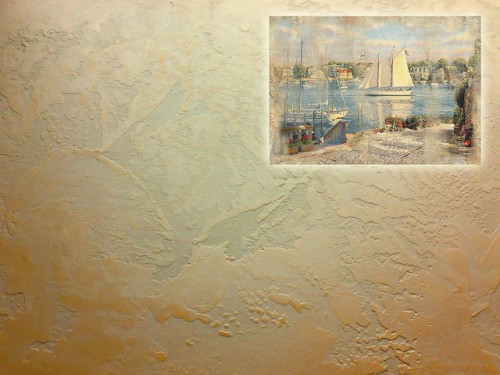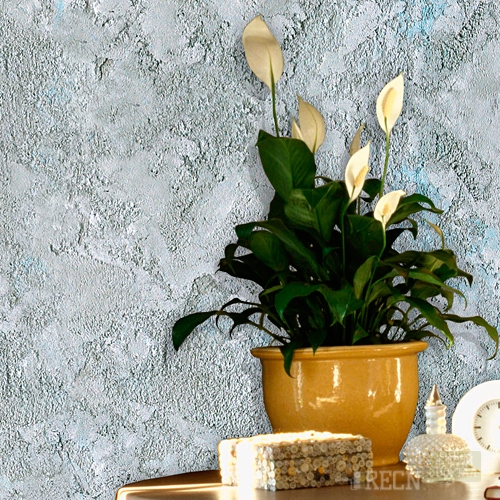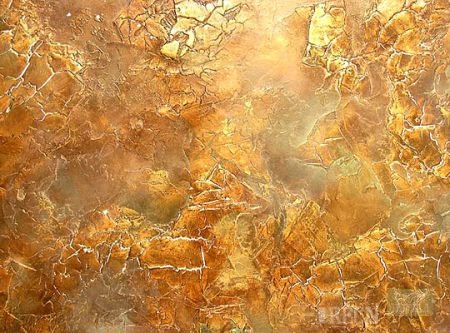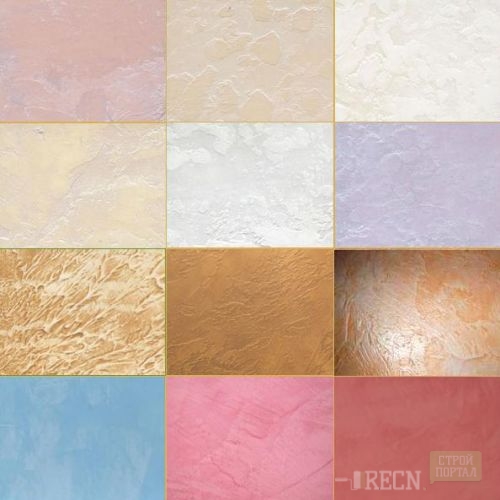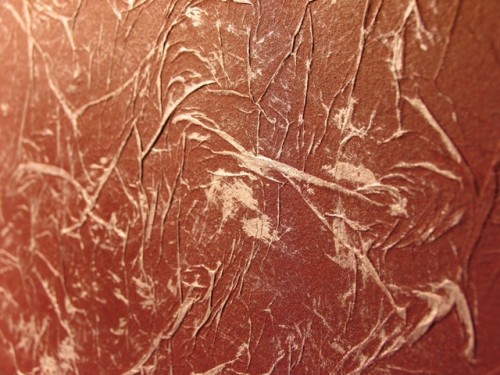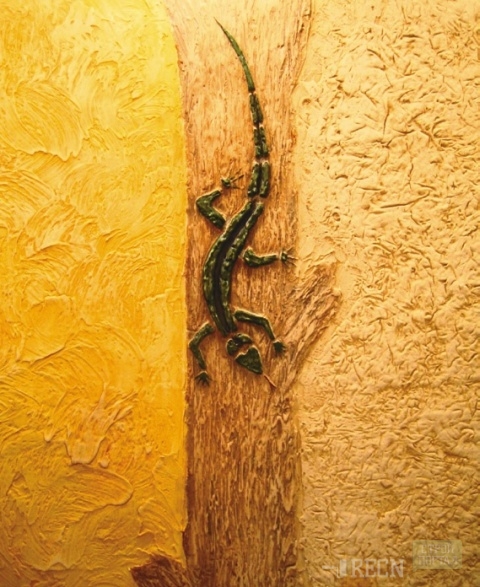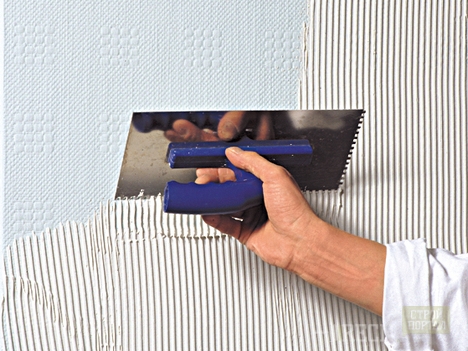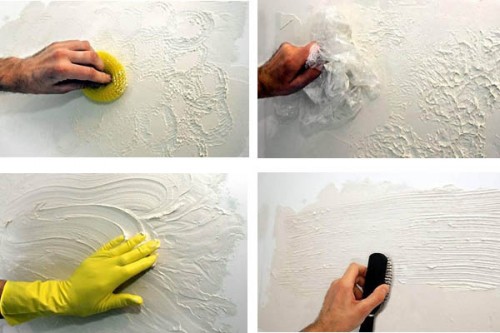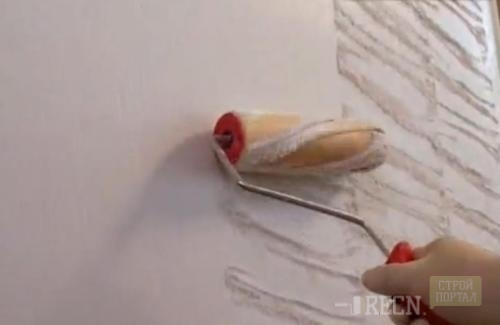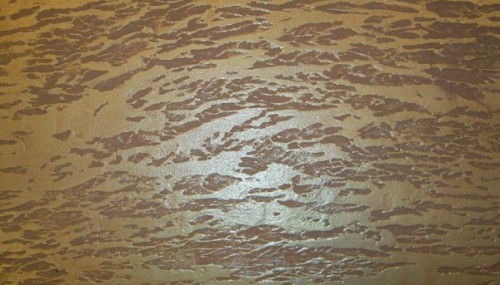
Structural Plastering Technology Walls
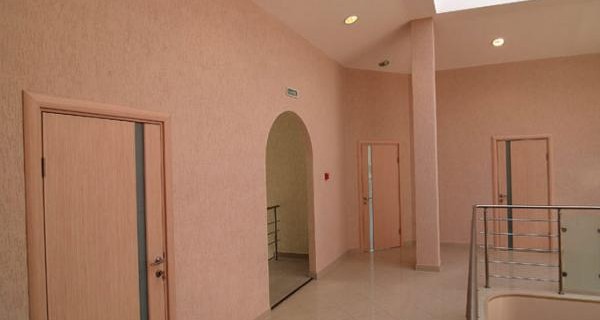
Structural plaster - material in demand and favorite designers. A large number of its varieties contributes to the creation of a unique type of facades and interiors, it is possible to create a similarity of marble pattern and tissue texture, a cut-off wood. Structural plaster can be used when creating an interior of any style, classic or modern. In order not to make a mistake in choosing a suitable material for registration of a specific room, you should first examine information about its properties.
Content
Structural Plaster - Material Features
First, find out what is a structural plaster. Along with the textural and textured, it is a kind of embossed plaster. Each type of embossed plaster has a set of positive characteristics:
- long service life
- ease of cleaning and care,
- resistant to mechanical damage
- it does not change its shade under the influence of ultraviolet radiation,
- its texture allows you to hide small wall defects,
- it permeates for vapors, while not afraid of moisture impact,
- it is environmentally friendly, can be operated in different temperature modes, from - 50 to + 75 degrees,
- the variety of its shades allows you to produce bold experiments and create uniquely beautiful design options for premises.
With the help of decorative structural plaster, you can simulate the surface of the cutting of wood or tree cortex, torn stone, snake skin, etc. In stores, the mixture is already ready for use, packaged in 15 or 20 liter buckets, mix it with anything other than the coloring pigment. The plaster has the form of a white thick mass, characterized by plasticity and viscosity. It is applied to the walls with a spray or spatula, to make decorative species are treated with special tools.
Although many interesting products are presented in the finishing materials market, buyers often prefer decorative plaster - materials having an attractive view, practical in operation and easy to install.
Which components are part of the structural plaster
For the manufacture of decorative structural plaster, the basis may be taken:
- cement-limestone (mineral) mixture
- silicate potassium
- synthetic latexes.
The manufacture of basic material is produced on a water basis or using solvents. To perform interior decoration of rooms, you should choose water-based plaster:
- it is environmentally friendly,
- does not have an unpleasant odor
- allows you to perform work without evicting tenants from home.
High aesthetic properties The material is attached to its composition grain fillers:
- wood fibers,
- pebbles of shallow fraction,
- chips quartz or mica.
The dimensions of these additives and their number determine the relief and surface structure. The original color of this mass is snow-white, painting pigments are selected for giving it the desired shade.
The qualitative characteristics of the material and its cost are in proportional dependence on the materials constituting the base of the plaster. When choosing plaster, it should be clearly defined with the tasks that will be imposed on the finishing material.
The lime present in the composition of structural plaster does not interfere with the formation of a strong, non-exposed surface of the surface. Even higher waterproof qualities are distinguished by materials created on a silicate and latex basis: under the influence of moisture, they do not swell, the contamination accumulated on them is easily removed using a sponge moistened in a soap solution.
Considering the photo of structural plaster, it is not difficult to note that when it is aid, it can be very successfully cope with the creation of the surfaces imitating fashionable snake skin today and the cracked bark of the tree to the traditionally used in the construction of the Saman, creating a unique rustic flavor.
Applying structural plaster
We select the foundation of plaster in accordance with the finished surfaces
Specialists advise to apply mineral plaster only on surfaces containing sand in their composition, i.e. A suitable wall will be placed in conventional sandy cement mortar.
It is not recommended to apply a silicate-based plaster on the walls painted with water-level paint or coated with dispersion primer - the adhesion of the materials will be weak and the plaster will fall off over time.
You can put the plaster made on silicate and latex based on any surfaces: drywall, wood, brick, cement-sand plaster.
Give the desired tint
Since the material has a white color, then it will not be difficult to give it the necessary shade. To do this, you will need to choose a suitable pigment. You can mix the coloring component with the plaster yourself, but more rational to order a tinting of the material in the store, choosing a shade according to the catalog - in such conditions it is possible to be convinced of obtaining exactly that shade that ordered.
The technology of manufacturing structural plaster also allows the paint to the prepared surface of the finishing layer.
What instruments need
Structural plaster with sprayer, roller or spatula is applied. Since its composition includes rigid fillers of different fractions, the resulting surface can have a coarse-grained or fine-grained structure and a variety of drawings.
The fine-grained structure visually looks smooth, a drawing from rounded recesses is clearly visible on the coarse-grain.
The decorativeness of the finished surface depends on what instruments used the master when applying plaster.
Stages of performance
Applying structural plaster - the process is complex, it consists of several stages:
- Preparatory, consisting in cleaning the surface of the plastered surface from the residues of the old paint or a chopper, alignment of the walls in the case of noticeable defects. But to ensure that the walls have acquired the perfect smoothness, it is not worth it.
- Primer - with a neat application penetrates cracks, strengthens the structure, prevents the appearance of fungi and mold, swelling from excessive moisture.
- Plastering - Stage Creative, Applying the usual or Fact roller on the walls of the walls, you can create original drawings, a special charm will give the presence of small granules of natural stones or larger fractions of other fillers.
- Starting work follows from the top of the walls, or from the ceiling. Applying the first layer can be called splashing. Sprayed mass roll up, arrange corners and eaves.
- The originality of the figure will give the plaster with circular motions, formed with the cross movements of the spatula, the convex strips will determine the drawing.
- After applying the first layer of plaster, the work is stopped for several hours until the wall will dry out. Then they apply the corner layer and smolden. In the same way, the recesses in the walls and niches are plastered.
So that thickens on the plastered surface dry completely may take up to 48 hours. Next, the dried convexities are treated with a skin, a moistened rag is used to remove dust.
If a unloaded material was used for the plaster, then the surface of the shade can also be used after drying the layer of the finishing layer, a rubber sponge is used to apply paints. You can imitate scuffs with a moisturized foam sponge.
After drying, the paint layer is treated with a protective wax layer.
There are many ways to apply material, it can be: rolling with rollers with all sorts of reliefs, the creation of a unique drawing with a washcloth or sponges, brushes, pieces of polyethylene film. The number of methods used can limit only your taste or fantasy.
Next, you can find out how the structural plaster looks like on video and familiarize yourself with the principles of its application.




